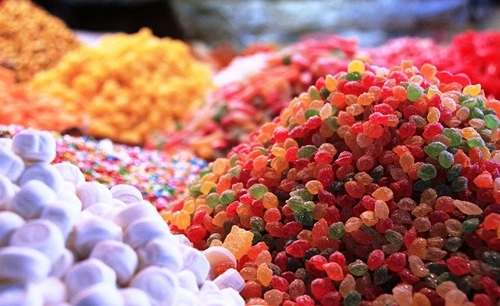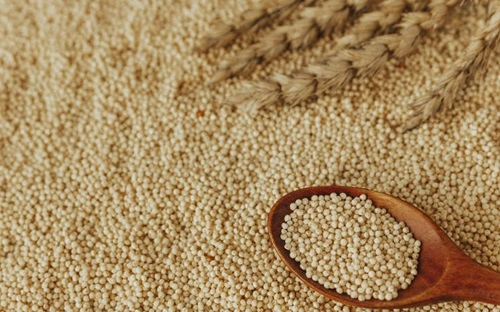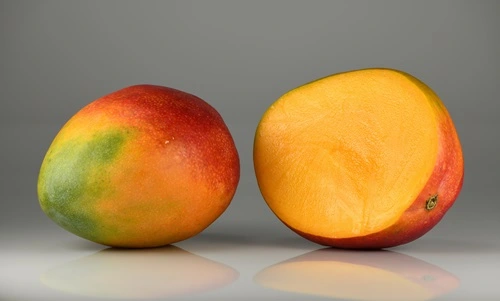Candy is one of the most beloved treats in the world, enjoyed by people of all ages and cultures. From the sweet simplicity of chocolate bars to the colorful allure of gummy bears, candy holds a special place in our hearts (and taste buds). But beyond its delightful flavors, candy has a fascinating history, science, and culture that few people know about. Here are 10+ interesting facts about candy that will make your next treat even sweeter!

1. The Origins of Candy Date Back Thousands of Years
Candy has a long history that stretches back over 4,000 years. The first candies were made by ancient civilizations like the Egyptians, who combined honey with nuts, fruits, and spices to create sweet treats. In ancient India, people discovered how to crystallize sugar, creating the first form of “sugar candy.” These early sweets were much simpler than today’s candies but laid the foundation for the modern candy industry.
2. Candy Corn Was Originally Called “Chicken Feed”
Candy corn is a popular Halloween treat in the U.S., known for its tri-color design that resembles kernels of corn. It was first invented in the 1880s by George Renninger, a candy maker at the Wunderle Candy Company. Originally called “Chicken Feed,” it was marketed to farmers as a treat that resembled the food they gave to their chickens. Since then, candy corn has become a Halloween staple, with over 35 million pounds produced annually.
3. Cotton Candy Was Invented by a Dentist
It may sound ironic, but cotton candy, one of the world’s sweetest treats, was co-invented by a dentist! In 1897, dentist William Morrison partnered with confectioner John C. Wharton to create a machine that spun heated sugar into thin threads. They introduced their invention, which they called “Fairy Floss,” at the 1904 World’s Fair, and it was an instant hit. Later, the name changed to “cotton candy,” and it’s been a carnival favorite ever since.
4. Chocolate Bars Were Originally Considered Health Food
When chocolate bars first became widely available in the late 19th century, they were marketed as health food. Early manufacturers like Hershey’s promoted chocolate as a nutritious snack that could provide energy and vitamins. While modern science has debunked the idea of chocolate as a health food, dark chocolate with a high cocoa content does contain antioxidants that have been linked to heart health benefits. But remember, moderation is key!
5. Gummy Bears Were Inspired by Real Dancing Bears
Gummy bears were created by German candy maker Hans Riegel in the 1920s. He was inspired by European traditions of dancing bears, which were often showcased at festivals and fairs. He molded his gummy candies into bear shapes and called them “Dancing Bears.” Today, gummy bears come in various flavors, shapes, and sizes and are enjoyed worldwide. Riegel’s company, Haribo, remains one of the largest gummy bear producers in the world.
6. Pez Dispensers Were Originally Designed for Adults
Pez candies, which are now a favorite among kids, were initially created as a mint for adults in Austria in the 1920s. The original Pez dispensers were marketed as an alternative to smoking, with the mints meant to curb tobacco cravings. It wasn’t until the 1950s that Pez began making fruity flavors and creating character dispensers, shifting its target market to children and turning Pez into a cultural icon.
7. Licorice Is Made from the Root of a Plant
Unlike most candies that are primarily sugar-based, licorice is made from the root of the licorice plant (Glycyrrhiza glabra). This root has a naturally sweet flavor that has been used for thousands of years in medicine and food. Today, the flavor of black licorice candies is usually enhanced with anise, which has a similar taste. However, consuming too much real licorice root can be harmful due to a compound called glycyrrhizin, which can raise blood pressure.
8. M&Ms Were Created for Soldiers
M&Ms were initially designed as a convenient and mess-free candy for soldiers during World War II. Inspired by a similar British candy, Forrest Mars Sr. of Mars Inc. created M&Ms in 1941 with a hard candy shell that prevented the chocolate from melting. The candy’s famous tagline, “Melts in your mouth, not in your hand,” was a nod to this design. Today, M&Ms are one of the most popular candies in the world, with countless flavors and varieties.
9. Jelly Belly Flavors Are Developed by Chemists
The creators of Jelly Belly jelly beans take candy-making to a new level by working with flavor chemists. Each jelly bean flavor is developed to taste exactly like the intended flavor, whether it’s buttered popcorn, watermelon, or even jalapeño. The process involves extensive research, development, and testing to achieve the authentic taste. Jelly Belly also produces a line of “weird” flavors, including flavors like stinky socks and vomit for the BeanBoozled game.
10. Bubble Gum Was Accidentally Invented
Bubble gum as we know it was invented by accident. In 1928, Walter Diemer, an accountant for the Fleer Chewing Gum Company, was experimenting with new chewing gum recipes in his spare time. He stumbled upon a formula that was less sticky and stretched more than regular gum, allowing people to blow bubbles. Diemer dyed the gum pink, as it was the only color available, and it became an instant hit. This “Double Bubble” gum became the world’s first bubble gum, setting the stage for bubble-blowing fun for generations.
11. Halloween is the Biggest Candy Sales Holiday in the U.S.
Halloween is the biggest candy holiday in the United States, with Americans spending over $2 billion annually on Halloween candy alone. From chocolates to gummy candies and caramel apples, Halloween treats come in all shapes, flavors, and sizes. Fun fact: more than 600 million pounds of candy are sold each year in the weeks leading up to Halloween, with Snickers, Reese’s, and M&Ms consistently ranking among the top favorites.
12. Pop Rocks Create an Explosive Reaction
Pop Rocks, the iconic candy that fizzes and pops in your mouth, was invented by chemist William A. Mitchell in 1956. The secret to Pop Rocks’ explosive reaction lies in carbon dioxide, which is added to the candy at high pressure. When the candy dissolves in your mouth, it releases the trapped gas, causing the popping sensation. Despite urban legends, Pop Rocks are perfectly safe to eat, though the intense popping can catch some people by surprise!
13. Candy Canes Were Originally All White
Candy canes have been a holiday staple for centuries, but they didn’t always look as they do today. When they were first created in the 17th century, candy canes were all white. The red stripes we recognize today were added in the early 20th century. The shape of the candy cane is often said to resemble a shepherd’s crook, symbolizing the shepherds who visited baby Jesus, though this association became popular much later.
14. The World’s Largest Chocolate Bar Weighed Over 12,000 Pounds
Chocolate lovers will be thrilled to know that the world’s largest chocolate bar weighed over 12,000 pounds. It was created by Thorntons, a UK-based chocolate company, in 2011 to celebrate the company’s 100th anniversary. This massive chocolate bar was over 13 feet long, 4 feet wide, and 10 inches thick, setting a Guinness World Record. While not available for eating, it certainly set a new standard in the candy world.
15. Fun-Size Candy Bars Were Created for Trick-or-Treating
In the 1960s, Mars Inc. introduced the idea of “fun-size” candy bars, smaller versions of full-sized candy bars that were ideal for trick-or-treating. Fun-size bars allowed candy companies to produce more affordable, individually wrapped candies, making it easy for households to hand out treats to large numbers of children. Today, fun-size candies are a popular Halloween staple, though some fans prefer the full-size bars!
From ancient honey confections to modern favorites like Pop Rocks and M&Ms, candy has a rich history and culture that goes far beyond its sugary sweetness. These fascinating facts show the creativity, science, and even accidents that have shaped the candy industry into what it is today. So, the next time you unwrap your favorite treat, remember that candy isn’t just delicious; it’s part of a sweet story that spans thousands of years and countless cultures.


